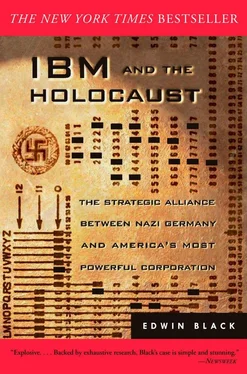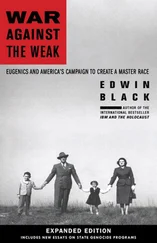Kruger, Hermann, “Das Hollerith-Lochkartenverfahren im Fursorgewesen,” Hollerith Nachrichten, 47 (Mar.1935): 614-632.
Lawin, Rudolf, “Die Auszahlung einer Wohnungsbestandsaufnahme im Hollerith-Verfahren,” Hollerith Nachrichten, 58 (Feb.1936): 773-777.
Luebke, David Martin and Sybil Milton, “Locating the Victim: An Overview of Census-Taking, Tabulation Technology, and Persecution in Nazi Germany,” IEEE Annals of the History of Computing, 16:3, (1994): 25-39.
Methorst, H.W., “The New System of Population Accounting in the Netherlands,” Journal of the American Statistical Association (1936): 713-714, 719-722.
Methorst, H.W. and J.L. Lentz, “Die Volksregistrierung und das neue in den Niederlanden eingefuhrte einheitliche System,” Allgemeines Statistisches Archiv, 26 (1936): 59-84.
Muller, Johannes, “Die Stellung der Statistik in neuen Reich,” Allgemeines Statistisches Archiv, 24 (1934): 241-250.
Schaefer, Bradley E., “Conjunctions that Changed the World,” Sky & Telescope (May 2000).
Schultze, Edgar, “Die verfeinerte Auswertung statistischer Zusammenhange mit Hilfe des Hollerith-Lochkartenverfahrens,” Hollerith Nachrichten, 40 (Aug.1934): 507-517.
Seltzer, William, “Population Statistics, the Holocaust, and the Nuremberg Trials,” Population and Development Review, 24 (3): 511-552.
“Watson neuer Prasident der Internationalen Handelskammer,” in Volkischer Beo bach ter, 28 June, 1937.
Westphalen, “Die Hollerith Maschinen Gesellschaft im Dienste der Sparkassen-Statistik,” Hollerith Nachrichten, 54 (Oct.1935): 721-726.
Zahn, Friedrich, “Vom Wirtschaftswert des Menschen als Gegenstand der Statistik,” Allgemeines Statistisches Archiv, 24 (1934/35): 461-464.
Zahn, Friedrich, “Fortbildung der deutschen Bevolkerungsstatistik durch erbbiologische Bestandsaufnahmen,” Allgemeines Statistisches Archiv, 27 (1937/38): 180-195.
Zahn, Friedrich, “Die Statistik im nationalsozialistischen Grossdeutschland,” Allgemeines Statistisches Archiv, 29 (1939): 369-392.
TYPESCRIPTS AND UNPUBLISHED MANUSCRIPTS
Engelbourg, Saul. International Business Machines: A Business History, typescript, 1954.
Kistermann, Friedrich, The Way to the First Automatic Sequence-Controlled Calculator: The 1935 DEHOMAG D 11 Tabulator Title, typescript, 1995.
Kistermann, Friedrich, Locating the Victims: The Nonrole of Punched Card Technology, typescript, 1997.
J.L. Lentz, Memoires I, Registratie van Joden (oorsprong en ontwikkeling), unpublished journal, circa October 1944.
J.L. Lentz, Ambtelijke Herinneringen, unpublished journal, circa October 1944.
Presser, Jacob. Ondergang: De vervolging en verdelging van het Nederlandse Jodentom, typescript.
Seltzer, William and Margo Anderson, After Pearl Harbor: The Proper Role of Population Data Systems in Time of War, an unpublished paper.
www.edwinblack.com
Nazi Nexus
America’s Corporate Connections To Hitler’s Holocaust
www.nazinexus.com
2009
The Plan
How to Rescue Society When the Oil Stops—or the Day Before
www.planforoilcrisis.com
2008
Internal Combustion
How Corporations and Governments Addicted the World to Oil and Derailed the Alternatives
www.internalcombustionbook.com
2006
Banking on Baghdad
Inside Iraq’s 7,000 Year History of War, Profit, and Conflict
www.bankingonbaghdad.com
2004
War Against the Weak
Eugenics and America’s Campaign to Create a Master Race
www.waragainsttheweak.com
2003
IBM and the Holocaust
The Strategic Alliance Between Nazi Germany and America’s Most Powerful Corporation
www.ibmandtheholocaust.com
2001
The Transfer Agreement
The Dramatic Story of the Pact Between the Third Reich and Jewish Palestine
www.transferagreement.com
1984 and 2001
Format C:
A Novel
www.formatnovel.com
1999
What Reviewers Have Said About
IBM AND THE HOLOCAUST
“An explosive new book…. Backed by exhaustive research, Black’s case is simple and stunning.”
—Michael Hirsh,
Newsweek
“Black’s book is most interesting when he is dealing with Watson’s stubborn and unsuccessful determination to continue in control of IBM’s German operation without appearing to be doing so. He was able to cut off direct relations between IBM in the U.S. and the Germans while continuing to deal with them indirectly. He was a master of subterfuge and made a fine art of being in a position to deny collaboration with the Nazis while operating through subsidiaries who were responsive to his every wish…. And he never forbade them to supply IBM machines that were used in sending people to camps, which they did.”
—Gordon A. Craig,
New York Review of Books
“Black establishes beyond dispute that IBM Hollerith machines significantly ad vanced Nazi efforts to exterminate Jewry…. IBM and the Holocaust is a valuable contribution to our understanding of the Holocaust.”
—Christopher Simpson,
Washington Post Book World
“Black’s study… contains a wealth of unknown or little-known details. The author convincingly shows the relentless efforts made by IBM to maximize profit by selling its machines and its punch cards to a country whose criminal record would soon be widely recognized.”
—Saul Friedlander,
Los Angeles Times
“ IBM and the Holocaust is a disturbing book—all the more so because its author doesn’t prescribe what should be done about sins committed more than half a century ago. It is left to readers to decide.”
—Ron Grossman,
Chicago Tribune
“Black’s book is shocking. Its contents go against the grain of all that is dear to naive images of corporate America…. This book will be a case study in corporate ethics for years to come.”
—Robert Urekew,
Midstream
“ IBM and the Holocaust is an ambitious book… an important contribution to Holocaust studies.”
—John Friedman,
The Nation
“The book adds much to our knowledge of the Holocaust and World War II. Black convincingly demonstrates the extent to which it [IBM technology], was central to the operation of the Third Reich.”
—Terry W. Hartle,
Christian Science Monitor
“Black makes a case that shames the IBM of the mid-20th century…. There will be no question… in the minds of readers that IBM officials had the ability to understand the task their machines were performing. The book succeeds as a piece of excruciatingly documented journalism.”
—Karen Sandstrom,
Cleveland Plain Dealer
“Black’s book is so enlightening [because] it paints a richly textured picture of how a man [Watson], and an entire company, can ignore all sense of morality while not once transgressing the lines of business ethics. If nothing else, this book should be required reading for every first-year MBA student.”
—Sam Jaffe,
Businessweek.com
“Black’s argument that IBM made millions from its association with the Nazis seems almost impossible to refute.”
—John Mark Eberhart,
Milwaukee Journal Sentinel
“Black’s book… is an ugly story, hidden for years, told by a master craftsman in a compelling way. More than just another Holocaust tale… it’s a chilling lesson.”
Читать дальше












